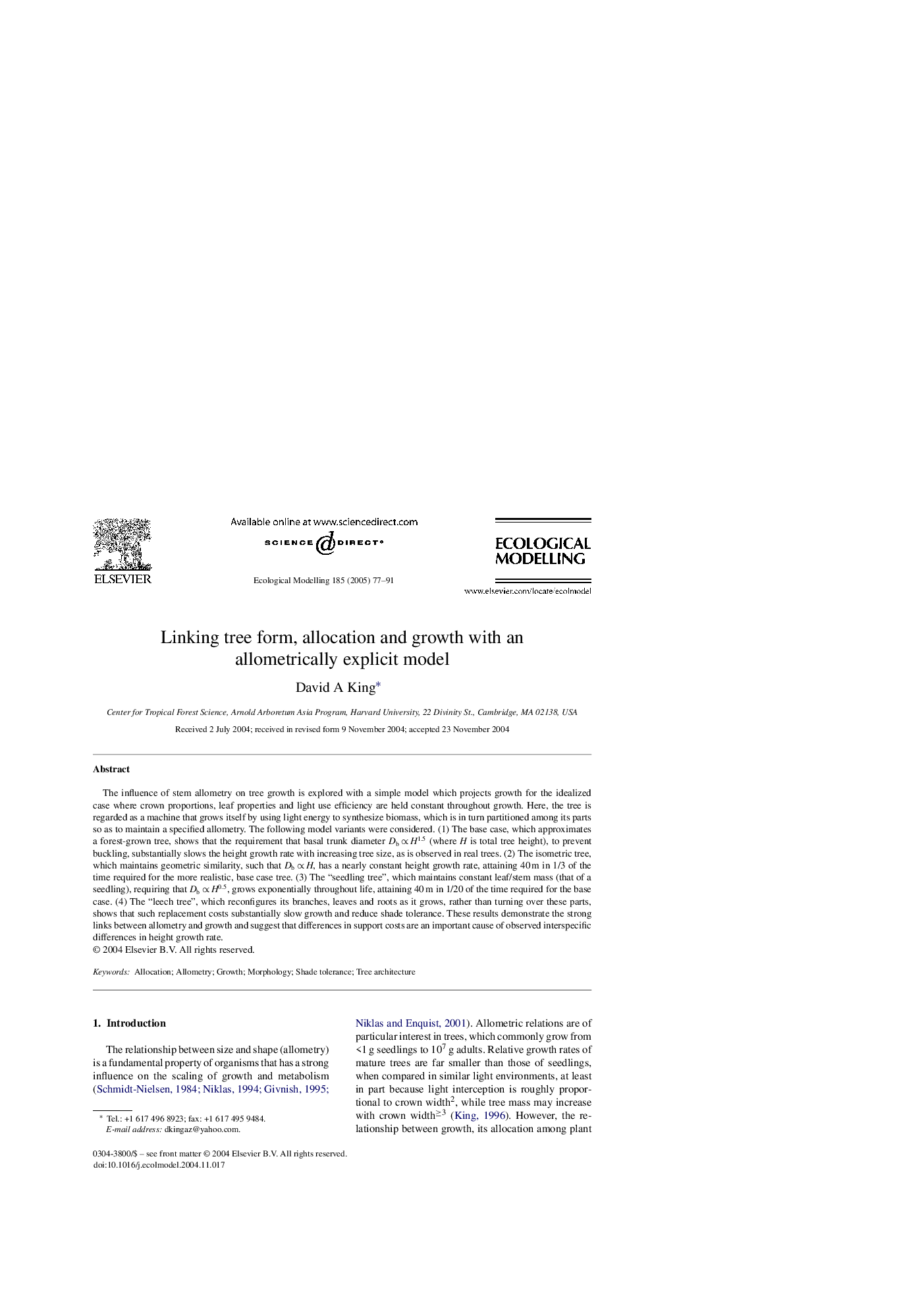| Article ID | Journal | Published Year | Pages | File Type |
|---|---|---|---|---|
| 9443600 | Ecological Modelling | 2005 | 15 Pages |
Abstract
The influence of stem allometry on tree growth is explored with a simple model which projects growth for the idealized case where crown proportions, leaf properties and light use efficiency are held constant throughout growth. Here, the tree is regarded as a machine that grows itself by using light energy to synthesize biomass, which is in turn partitioned among its parts so as to maintain a specified allometry. The following model variants were considered. (1) The base case, which approximates a forest-grown tree, shows that the requirement that basal trunk diameter Db â H1.5 (where H is total tree height), to prevent buckling, substantially slows the height growth rate with increasing tree size, as is observed in real trees. (2) The isometric tree, which maintains geometric similarity, such that Db â H, has a nearly constant height growth rate, attaining 40 m in 1/3 of the time required for the more realistic, base case tree. (3) The “seedling tree”, which maintains constant leaf/stem mass (that of a seedling), requiring that Db â H0.5, grows exponentially throughout life, attaining 40 m in 1/20 of the time required for the base case. (4) The “leech tree”, which reconfigures its branches, leaves and roots as it grows, rather than turning over these parts, shows that such replacement costs substantially slow growth and reduce shade tolerance. These results demonstrate the strong links between allometry and growth and suggest that differences in support costs are an important cause of observed interspecific differences in height growth rate.
Related Topics
Life Sciences
Agricultural and Biological Sciences
Ecology, Evolution, Behavior and Systematics
Authors
David A King,
